This unique pilot program helped fund improvements in eight high-performance model homes from 2023 to 2025.
Click below to jump directly to any section:
2023-2024 High-Performance Homes (#1-5)
We partnered with select builders to build five homes that satisfied the Department of Energy Zero Energy Ready Home certification, one of the most rigorous home certification standards available.
2024-2025 High-Performance Homes (#6-8)
We invested in three additional high-performance homes to help builders reach new levels of efficiency.
This section details the High-Performance Homes Pilot design and outcomes. We also highlight key elements found in every high-performance home.
"Energy efficient homes are environmentally friendly, enjoy higher resale values and save their owners anywhere from $200-$400 annually in energy costs."
- The Residential Energy Network (RESNET®)
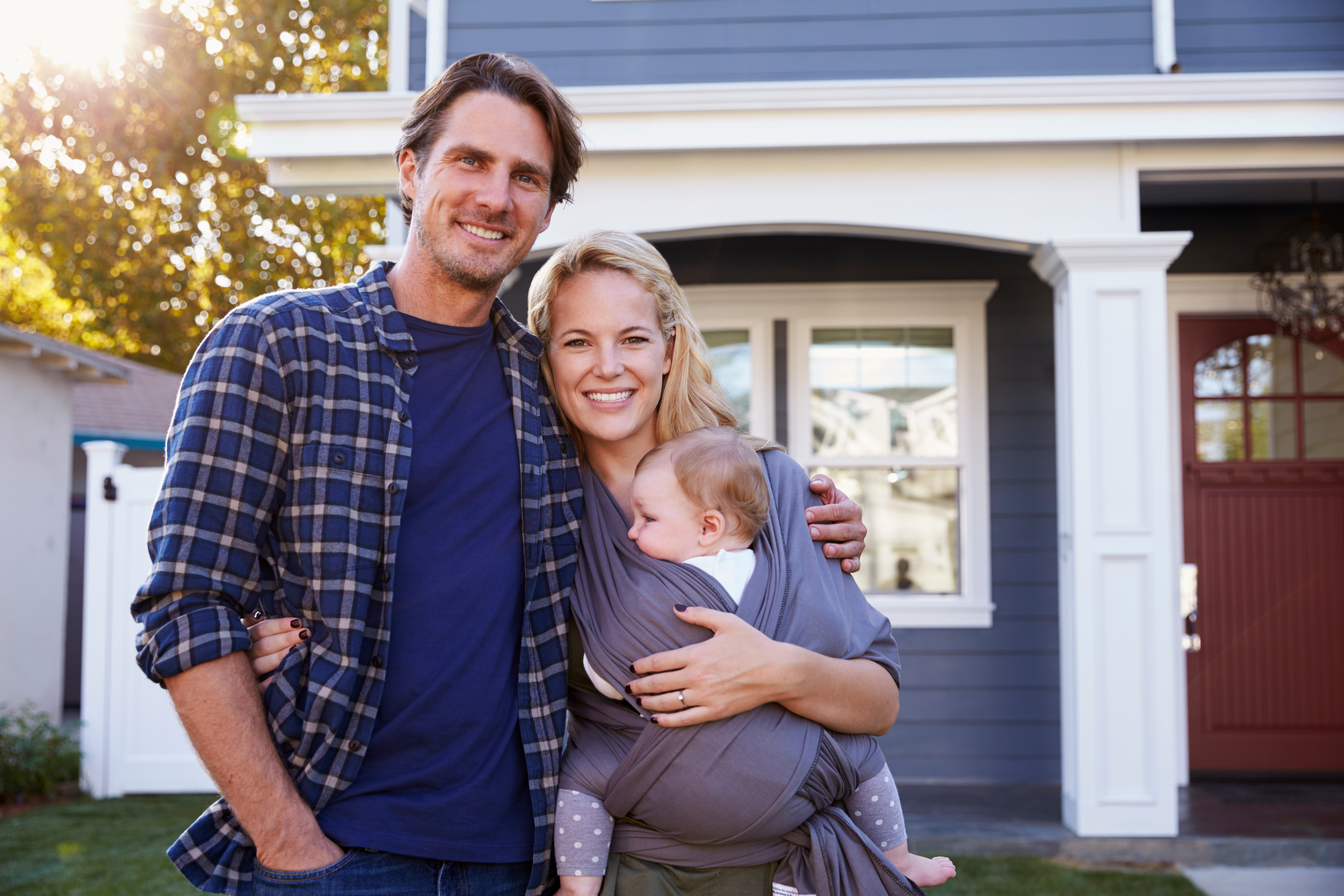
How do high-performance homes provide value?
- New homes built to certifications above code have additional value, such as greater comfort, cleaner air, quieter, lower energy use, and lower utility bills.
- Energy-saving features such as extra insulation, air-tight construction, high efficiency heating, cooling, appliances, lighting are standard on all high-performance homes.
- Positioning the home to capture heat and power from the sun is a key step for highly efficient homes. This positioning also enables the addition of solar panels to offset energy usage.
"We love the lowered maintenance and the energy savings of our Zero Energy Ready Home"
- Homeowner in Gettysburg, PA (Source)
New home certification basics: efficiency is a spectrum.
When you shop for a new home, remember that not all homes are created equal. Building codes only establish minimums for health, safety, and durability. There are many steps that builders can take to build better than code.
Here’s an overview of different energy efficiency standards:
1. Basic homes are required to be built to code.
2. ENERGY STAR® certified homes are 10-20% more efficient than code homes.
3. Zero Energy Ready Homes are even more efficient and offer better indoor air quality and water conservation.
4. Passive Homes are generally the most energy efficient homes available without solar.
5. Net Zero Homes are a step above Zero Energy Ready or Passive Homes and add enough renewable power to “zero-out” annual energy costs.
Learn more about Zero Energy Ready Homes compared to other certification standards.
"Very few builders have used proven innovations that deliver high-performance with superior user experiences at the lowest cost. Now is a good time to adopt the advanced technologies and practices for getting to zero most affordably. Our environment and national security depend on it."
- Sam Rashkin, Former Chief Architect with U.S. DOE Building Technologies Office and author of Housing 2.0, A Disruption Survival Guide
2023-2024 High-Performance Homes Pilot (#1-5)
The five model homes in this program were built to the Zero Energy Ready standard. They are 10-20% more efficient than a code house. They also have systems to create healthier indoor air.
We are proud to work with the following builders. Click a builder's name to jump to their project details:
- Alden Homes (Mount Joy, PA)
- R. W. Buff Construction (Buck Hill Falls, PA)
- McNaughton Homes (Harrisburg and Mechanicsburg, PA)
- Susquehanna Valley Builders (Mechanicsburg, PA)
Model Home #1 — Alden Homes
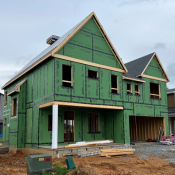
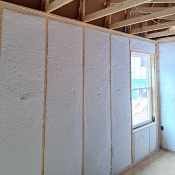
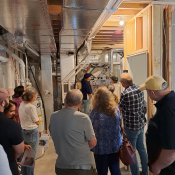
- Website: aldenhomes.com
- Contact: [email protected]
- Handout: download PDF
- Webinar: click here to watch
- Video: click below
Model Home #2 — R.W. Buff Construction
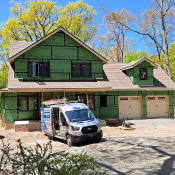
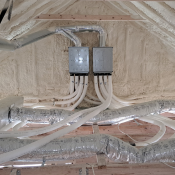
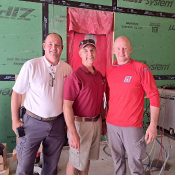
- Website: rwbuff.com
- Contact: [email protected]
- Handout: download PDF
- Video: click below
Model Home #3 — McNaughton Homes
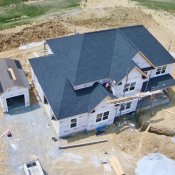

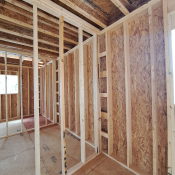
- Website: mcnaughtonhomes.com
- Contact: Emilie Brown at [email protected] or (717) 775-4368
- Handout: download PDF
- Webinar: click here to watch
- Video: click below
Model Home #4 — McNaughton Homes All-Electric Home
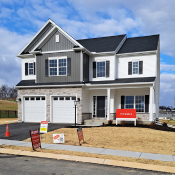

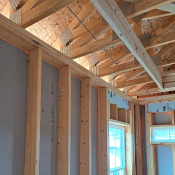
- Website: mcnaughtonhomes.com
- Contact: Emilie Brown at [email protected] or (717) 775-4368
- Handout: download PDF
- Webinar: click here to watch
- Video: click below
Model Home #5 — Susquehanna Valley Builders
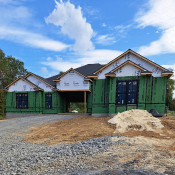
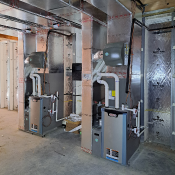
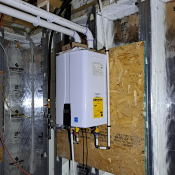
- Website: susquehannavalleybuilders.com
- Contact: [email protected]
- Handout: download PDF
- Video: click below
"I'm extremely thankful for the high-performance open house tour. We especially appreciated meeting the contractors who worked on the home. The tour presentation helped us better understand the zero energy ready components and features. We will absolutely be looking to buy a high-performance home in the coming years."
- Customer who attended a tour in Mount Joy, PA
2024-2025 High-Performance Homes (#6-8)
We are proud to work with the following builders. Click a builder's name to jump to their project details:
Model Home #6 — Hutch Homes (Lewisberry)
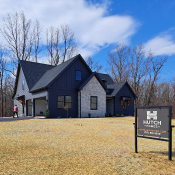
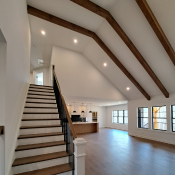
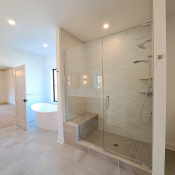
- Website: hutchhomesinc.com
- Contact: [email protected]
- Handout: download PDF
Model Home #7 — Alden Homes (Lititz)

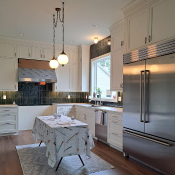
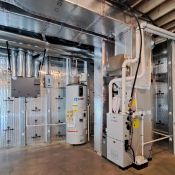
- Website: aldenhomes.com
- Contact: [email protected]
- Handout: download PDF
Model Home #8 — Hutch Homes (Carlisle)
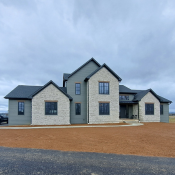
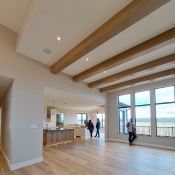
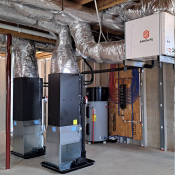
- Website: hutchhomesinc.com
- Contact: [email protected]
- Handout: download PDF
Pilot overview
We implemented two pilot programs spanning four years to help the residential new home market understand new technologies and higher certification standards. This pilot showcased a total of eight homes to the public through a series of open homes, tours, webinars and this webpage.
Building a better home takes both knowledge and skill. The pilot helped builders to experiment with technologies they don’t normally use. In doing so, the pilot provided both builders and contractors “hands-on” experience without the risk. We granted builders an average of $20,000 for upgrading one of their homes to a higher standard. Each home showcased technologies beyond what you would see in a typical home built to the current code.
Builders have both financial market and site-specific barriers to building high-performance homes. This includes high interest rates, buyer income, lack of energy efficient mortgages, few construction workers skilled in high-performance technologies, under educated buyers, builder complacency, and builders not fully understanding building science or the benefits of building certifications.
Before this pilot was implemented, there were no certified Zero Energy Ready® Homes being built in the Lehigh Valley. That has begun to change, but the pilot has shown that there are many pathways to build high-performance homes.
Building a higher performing home
Many modern home builders understand that the Heating, Ventilation and Air Conditioning systems (HVAC) interact with the house shell. This happens through the intended or unintended movement of heat, air, and moisture. High-performance homes seek to control all aspects of this interaction. These homes take extra steps to ensure the house stays dry from both liquid water (Best flashings + drainage planes) and vapor (control layers + air sealing), that increase a home’s resilience and durability. High-performance homes can, to some degree, stabilize the cost to live in the home over time. High-performance homes also make it much easier to “ride out” any loss of electricity caused by storms. All high-performance homes have some or all the following features.
Heat, air and moisture barriers
High-performance builders understand that a home should create the right barrier between the inside and the outside. These barriers control heat movement, air movement and moisture movement year-round. Exterior cladding doesn’t totally stop liquid water from penetrating a wall. The wall sheathing needs to resist and shed water from the outside as well. The sheathing also slows down vapor movement in both directions depending on the season of the year.
Better framing
Framing needs to be strong as well as create room for ducts, pipes, wiring and insulation. Exterior walls should have the minimum of mechanicals and no heating or cools distribution. Floor trusses create space for ducts so they don’t have to run through either the outside walls or the attic where they can gain or lose up to 30% of their heating or cooling. Raised-heel roof trusses give space above the outside walls so the attic insulation can do its job properly.
Better air-sealing
Air sealing starts by blocking and foaming all larger holes and cracks. High-performance homes then take it to another level by injecting an aerosol sealer into all rooms of the house under positive pressure from a large fan. In combination with the proper materials, this gives the builder almost total control over air and moisture movement through the shell. Tight houses are usually blower door tested to have less than 2 air changes per hour at 50 pascals pressure differential (ACH50). A lower number is better, and many new homes have the and ACH50 of less than 1.
Better insulation
You can pile on the insulation, but unless you air seal first and fill all the voids, the insulation just can’t do its job well. A real plus is to have continuous insulation outside the framing in addition to cavity insulation. Cavity insulation (between studs or rafters) allows heat to “bleed” through the framing. It’s critical to have the lowest heat loss and heat gain possible. Recommended insulation levels are: under slab ≥R-10, basement walls ≥R-19, cavity walls ≥R-20 with continuous exterior insulation ≥R-5, and attics ≥R-60
Better windows
Windows can make or break the comfort in a home. High-performance windows stay warm (or cool) to the touch and are extremely resistant to wind. Higher performing windows should have a ≤.27 U value or ≥3.7 R value. Many windows don’t need to be or will never be opened. Consider replacing these with fix windows that typically have higher R values.
Better heating and cooling
Heating and cooling systems are extremely efficient now. Key features include variable speed motors as well as DC-powered blowers and compressors for AC and heat pumps. Generally speaking, always install the highest efficiency equipment you can afford. Gas heaters ≥95%, Cold climate heat pumps SEER2 ≥16, HSPF2 ≥8, COP ≥1.75 at 5°F, Heat pump water heater ≥3.3 UEF. All AC and heating units should have a high-efficiency filter (MERV 13 or higher) for better indoor air quality.
Length and placement of ducts make a difference
Minimize duct length. Place all ducts and pipes inside the thermal and pressure boundaries. That’s where the heat and air stop in the house shell. Design the house so that there is less than 50 feet of hot water pipe length between the water heater and either the bathrooms or the kitchen.
Controlled ventilation
Opening and closing your windows is considered ventilation, but what about when it’s too cold or when it’s too hot? High-performance homes have Energy Recovery Ventilation systems (ERVs) that heats-up or cools-down the fresh air entering the house using the exhaust air that’s leaving the house. The fresh air is distributed throughout the house while the stale air is exhausted outdoors. Controlled ventilation increases indoor air quality by filtering out dust, pollen and other pollutants.
Site the home for solar access
Take advantage of the sun with your orientation to let the winter sun in and to keep the summer sun out. Any east or west facing windows need additional shading. Best to have the long side of the house facing within 45° of south to maximize solar gain in the winter. Siting a home properly gives you the best chance of achieving a zero-energy home. Design enough room on the south facing roof or the ground to install a PV system. A typical 2,500 SF home needs about 800 square feet of roof area clear of pipes, vents, chimneys, and dormers to mount a PV system. Consider installing a conduit from the electric panel to the attic or wherever the solar PV system might be installed. This makes your home “solar ready” and will lower the cost of a future installation.
Build with healthy materials
Build the house with the least toxic materials, sealants, glue, and paints. The less pollution you put in the house, the cleaner your indoor air will be.
Certifying the work
Every new house or full rehab has to be built to building and energy codes in order to satisfy minimum health, safety, and durability standards. Participating is one of many different certification or commissioning programs, allows a 3rd party to guarantee that the work was done properly.
Shopping for a new home?
Ask the builder what advanced certification the home has achieved. To learn more, connect with our current builder partners or visit our New Homes Program page. You can also reach us by phone at (844) 567-2236.
